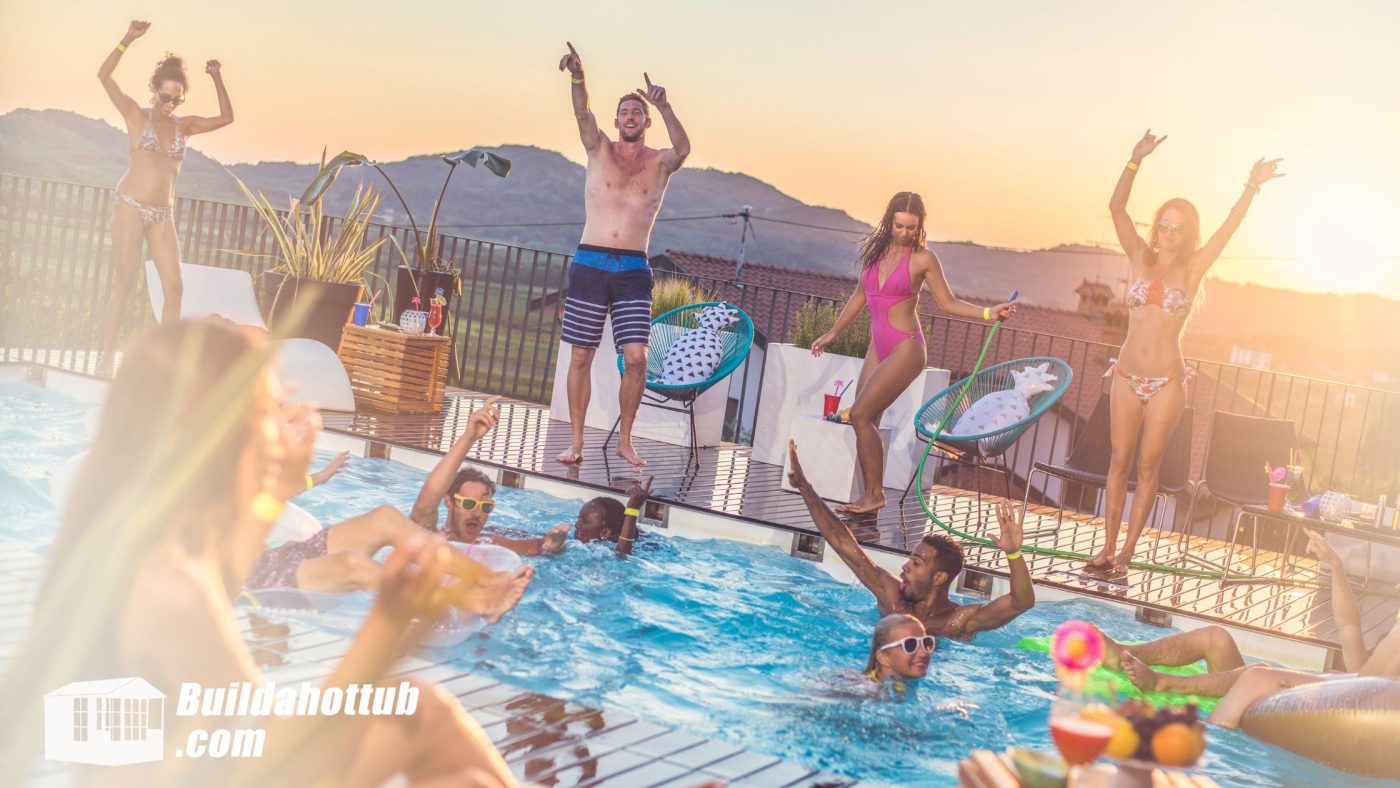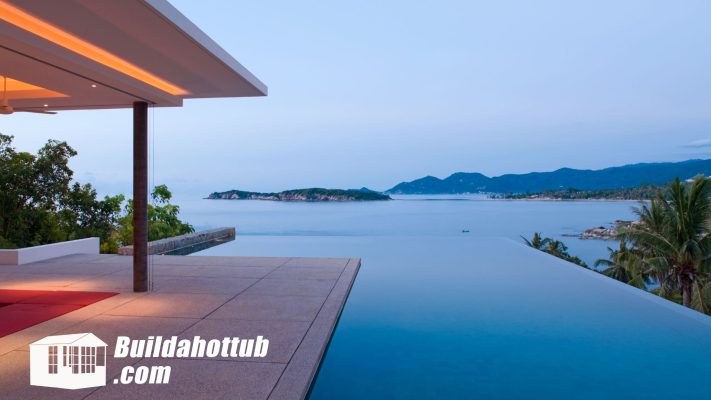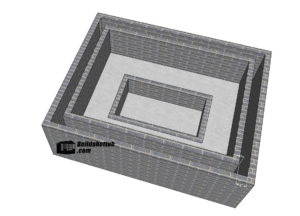Summer is just around the corner, and what better way to beat the heat than by taking a refreshing dip in your very own party pool? Having a pool in your backyard can be a luxurious addition to your home, but it can also come with a hefty price tag.
Don’t forget to check out my YouTube Channel
However, with a little bit of creativity, time, and effort, you can build a DIY party pool that is both affordable and fun for your family and friends. In this blog post, I’ll go over some key considerations for designing and constructing a DIY party pool, including the size and shape of your pool, materials to use, and safety tips.
Whether you’re looking to cool off during the summer months or host a backyard pool party, a DIY party pool can be a great way to enjoy the season without breaking the bank.
What is a Party Pool?
A party pool is a type of swimming pool designed for entertainment and socializing purposes. Unlike traditional swimming pools that are primarily used for exercise or relaxation, party pools are typically larger in size and may include additional features such as built-in seating, waterfalls, fountains, and lighting systems.
These pools are often built with a focus on creating a fun and lively atmosphere, making them perfect for hosting pool parties and social gatherings with friends and family. With the right design and features, a party pool can become the centrepiece of your backyard and provide hours of entertainment and enjoyment for everyone.
What are the design considerations?
There are several key design considerations to keep in mind when building a party pool. Here are a few of the most important factors to consider:
- Size and Shape: The size and shape of your pool will depend on the available space in your backyard and the number of people you plan to host in your pool parties. Party pools are typically larger than traditional swimming pools and may have irregular shapes, such as kidney or freeform designs, to create a more dynamic and fun look.
- Features and Accessories: Adding features and accessories to your pool can make it more enjoyable and functional for hosting parties. Some popular options include built-in seating areas, waterfalls, fountains, swim-up bars, and lighting systems.
- Safety: Safety is a crucial consideration when designing a party pool, especially if you have children or elderly guests. You should consider adding safety features such as pool alarms, fencing, and non-slip surfaces to prevent accidents and injuries.
- Materials: The materials you use for your pool will impact both its durability and aesthetic appeal. You can choose from a variety of materials such as concrete, CMU block, or ICF blocks, each with their own pros and cons.
- Landscaping: Landscaping around your pool can enhance its visual appeal and create a more inviting atmosphere for your guests. Adding plants, trees, and other features such as outdoor furniture and umbrellas can also provide shade and make your pool area more comfortable and functional.
Overall, designing a party pool requires careful planning and consideration of your specific needs and preferences. By taking the time to think through these design considerations, you can create a pool that not only looks great but also provides a safe and enjoyable environment for your family and friends.
What are the plumbing considerations?
Plumbing is a critical component of any pool, including party pools. Here are some plumbing considerations to keep in mind when building your DIY party pool:
- Pump and Filter System: A pump and filter system is essential for keeping your pool water clean and clear. You will need to choose a pump and filter system that is appropriate for the size of your pool, as well as the volume of water that will be circulating through it.
- Plumbing Pipes: Plumbing pipes will be required to connect the pool to the pump and filter system, as well as any additional features such as waterfalls, fountains, or slides. The type and size of pipes you need will depend on the flow rate and pressure required by your specific pool and features.
- Inlet and Outlet Fittings: Inlet and outlet fittings are essential components of the pool’s plumbing system. Inlet fittings allow water to enter the pool from the pump and filter system, while outlet fittings enable water to exit the pool and return to the pump and filter system for cleaning.
- Skimmers and Drains: Skimmers and drains are essential for removing debris and maintaining a clean pool. Skimmers are designed to remove debris from the surface of the water, while drains remove water from the bottom of the pool.
- Water Chemistry: Proper water chemistry is crucial for maintaining a healthy and safe pool environment. Your pool’s plumbing system should be designed to accommodate regular water testing, chemical adjustments, and sanitation.
Overall, plumbing considerations are essential to ensure that your party pool functions correctly and provides a safe and enjoyable environment for your guests.
What methods of constructing a party pool exist?
There are several methods of constructing a party pool, but two of the most common methods are Gunite and Shotcrete. However, both of these methods are typically not suitable for DIYers and require the assistance of professional pool contractors. Here’s a brief overview of these methods:
- Gunite: Gunite is a construction method that involves spraying a mixture of dry cement, sand, and water onto a framework of steel bars or mesh. This creates a strong, durable shell that can be customized with a range of finishes, including tiles, plaster, or pebble aggregates. Gunite pools are popular for their versatility, durability, and aesthetic appeal.
- Shotcrete: Shotcrete is a similar construction method to Gunite, but the mixture is pre-mixed and then pumped through a hose onto a steel framework. This creates a strong, durable shell that can be customized with a range of finishes. Shotcrete pools are popular for their strength, durability, and ease of maintenance.
While both Gunite and Shotcrete are excellent options for constructing a party pool, they are typically not recommended for DIYers. These methods require specialized equipment, materials, and expertise to ensure that the pool is constructed safely and correctly.
There are several construction options available for DIYers who want to build a party pool. Here are a few options to consider:
- Concrete Blocks: One option is to use concrete blocks to build the pool shell. This method involves stacking concrete blocks to create the walls of the pool, which are then reinforced with steel and filled with concrete. This approach is relatively affordable and can be customized to fit the size and shape of your desired pool. However, it does require a significant amount of labour and skill to ensure that the pool is structurally sound.
- Poured Concrete: Another option is to use poured concrete to create the pool shell. This method involves creating a wooden framework or mould in the desired shape and size of the pool, then pouring concrete into the mould to create the shell. This approach is more time-consuming and labour-intensive than other methods, but it allows for greater customization and is a popular option for DIYers.
- Block and Liner: A third option is to build a pool using a combination of concrete blocks and a pool liner. This method involves building the walls of the pool using concrete blocks, then installing a liner to create a waterproof seal. This approach is relatively affordable and can be customized to fit your specific needs, but it may not be as durable as other methods.
It’s important to note that all of these methods require a significant amount of skill, knowledge, and patience to ensure that the pool is constructed correctly and safely.
Additionally, you may need to obtain permits and follow building codes in your area, so be sure to do your research before starting any construction project.
But don’t worry – all of this is something that I can help you with. If you would like to get in touch below about your party pool – I will see just how I can help you.
Can I Help You?
If I can help you in any way I would love to hear from you. You can get in touch using the form below.
Thanks - Andi
 Hi, Andi here. I own Buildahottub.com and also write all of the articles and info pages on the site. Some years back now, I built my own hot tub but struggled to find the information I needed. So, once my tub was complete, I started this website to help others in their own pursuit of hot tub and plunge pools DIY building information.
Hi, Andi here. I own Buildahottub.com and also write all of the articles and info pages on the site. Some years back now, I built my own hot tub but struggled to find the information I needed. So, once my tub was complete, I started this website to help others in their own pursuit of hot tub and plunge pools DIY building information.
Fast forward to 2025, I've helped over 1400+ DIY customers just like you all over the world build hot tubs and pools. Have a good look around the site, there are lots of resources here. Please do get in touch if I can help you. - Cheers, Andi










